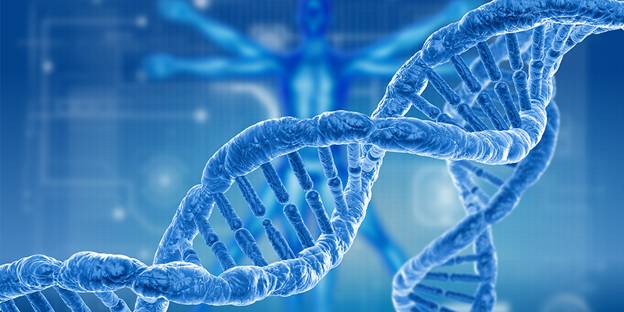Arm injuries are a common concern for both athletes and non-athletes alike, ranging from mild muscle strains to severe tendon tears and fractures. While environmental factors like trauma, repetitive motions, and improper technique play significant roles, recent research highlights the influence of genetics on arm injury susceptibility. Understanding this genetic component can help in the prevention, diagnosis, and treatment of arm injuries.
Genetic Predisposition to Arm Injuries
Several genes have been linked to the structure and strength of tendons, ligaments, and bones. For example, variants in the COL5A1 gene, which is involved in the production of type V collagen, have been associated with an increased risk of tendon injuries, including those in the arms. Collagen is a critical component of tendons and ligaments, providing them with strength and flexibility. People with certain mutations in collagen-related genes may have weaker tendons, making them more prone to injuries like rotator cuff tears and tennis elbow.
Another significant gene is CASP8, which is involved in the regulation of cell death (apoptosis). This gene plays a role in the recovery process after tendon injuries by influencing the rate of cell turnover. Research suggests that individuals with specific CASP8 gene variants may have a higher risk of developing chronic tendon problems, such as tendinitis, due to slower recovery and prolonged inflammation.
Inherited Conditions Affecting Arm Structure and Function
Some inherited conditions can predispose individuals to arm injuries. For example, Marfan syndrome, a genetic disorder affecting connective tissue, leads to weakened ligaments and bones, which can result in frequent dislocations and fractures, including in the arms. People with Marfan syndrome often experience long limbs and joint hypermobility, making them susceptible to joint injuries.
Another condition, Ehlers-Danlos syndrome (EDS), involves a defect in collagen production, leading to hypermobile joints and fragile tendons. Individuals with EDS are prone to dislocations and tears, especially in the arms and shoulders.
How Genetic Testing Can Help
Genetic testing is becoming a useful tool in identifying individuals at higher risk of arm injuries. Although genetic predisposition alone does not guarantee injury, it can provide valuable information when combined with environmental risk factors such as training intensity, technique, and biomechanics. Genetic testing can identify variants in collagen-related genes like COL5A1 and COL1A1, helping athletes and healthcare providers take preventive measures, such as specific training programs and physiotherapy to strengthen vulnerable areas.
For athletes, genetic information can be used to tailor training programs, focusing on exercises that reduce stress on tendons and ligaments. Similarly, rehabilitation programs can be adjusted based on the individual’s genetic risk factors, enhancing recovery and reducing the likelihood of recurrent injuries.
Frequently Asked Questions
How do genetics influence my risk of developing arm injuries?
Genetics play a role in determining the strength and flexibility of your tendons, ligaments, and bones. Variants in genes related to collagen production, like COL5A1 and COL1A1, can make your connective tissues more prone to injury. However, genetics are just one part of the equation—environmental factors such as repetitive motion, technique, and training load also contribute to your risk.
Can genetic testing predict arm injuries?
While genetic testing can identify certain risk factors for arm injuries, it cannot predict them with complete certainty. Genetic predisposition must be considered alongside other factors like your activity level, biomechanics, and previous injuries. For example, someone with a genetic predisposition for weaker tendons may avoid injury if they train carefully and follow preventive measures, while another person without the predisposition may still injure themselves due to poor technique or overuse.
Is it common for arm injuries to be hereditary?
Some arm injuries, especially those related to connective tissue disorders like Marfan syndrome or Ehlers-Danlos syndrome, have a clear hereditary component. These conditions lead to structural abnormalities in tendons and ligaments, increasing the risk of injury. However, most common arm injuries, such as tennis elbow or rotator cuff tears, result from a combination of genetic susceptibility and external factors like overuse or trauma.
How can I prevent arm injuries if I have a genetic predisposition?
If genetic testing reveals a predisposition to arm injuries, you can take preventive steps by focusing on strengthening exercises that target the muscles around your joints. Techniques like eccentric training (slowly lengthening the muscle under tension) have been shown to improve tendon resilience. Additionally, avoiding overuse and ensuring proper biomechanics during activities can reduce your risk.
Are there treatments that consider genetic factors in arm injury recovery?
Yes, personalized treatment plans that consider genetic predispositions are becoming more common. For example, if you are genetically predisposed to slower tendon healing, therapies like platelet-rich plasma (PRP) or stem cell therapy may be recommended to accelerate recovery. These treatments use your body’s natural healing factors to promote faster regeneration of damaged tissues.
What role do environmental factors play alongside genetics in arm injuries?
Environmental factors, such as repetitive strain, poor technique, and sudden increases in activity levels, interact with your genetic predispositions to increase the risk of injury. Even if you have a genetic predisposition for weaker tendons, managing these environmental factors—through proper training and recovery—can significantly lower your injury risk.
Conclusion
The role of genetics in arm injuries is becoming increasingly clear, especially with advancements in genetic testing and personalized medicine. While genetics can predispose individuals to certain types of injuries, environmental factors such as activity level, biomechanics, and training intensity still play crucial roles. By understanding genetic risk factors, individuals can adopt tailored preventive and rehabilitative strategies to mitigate injury risk and enhance recovery.





